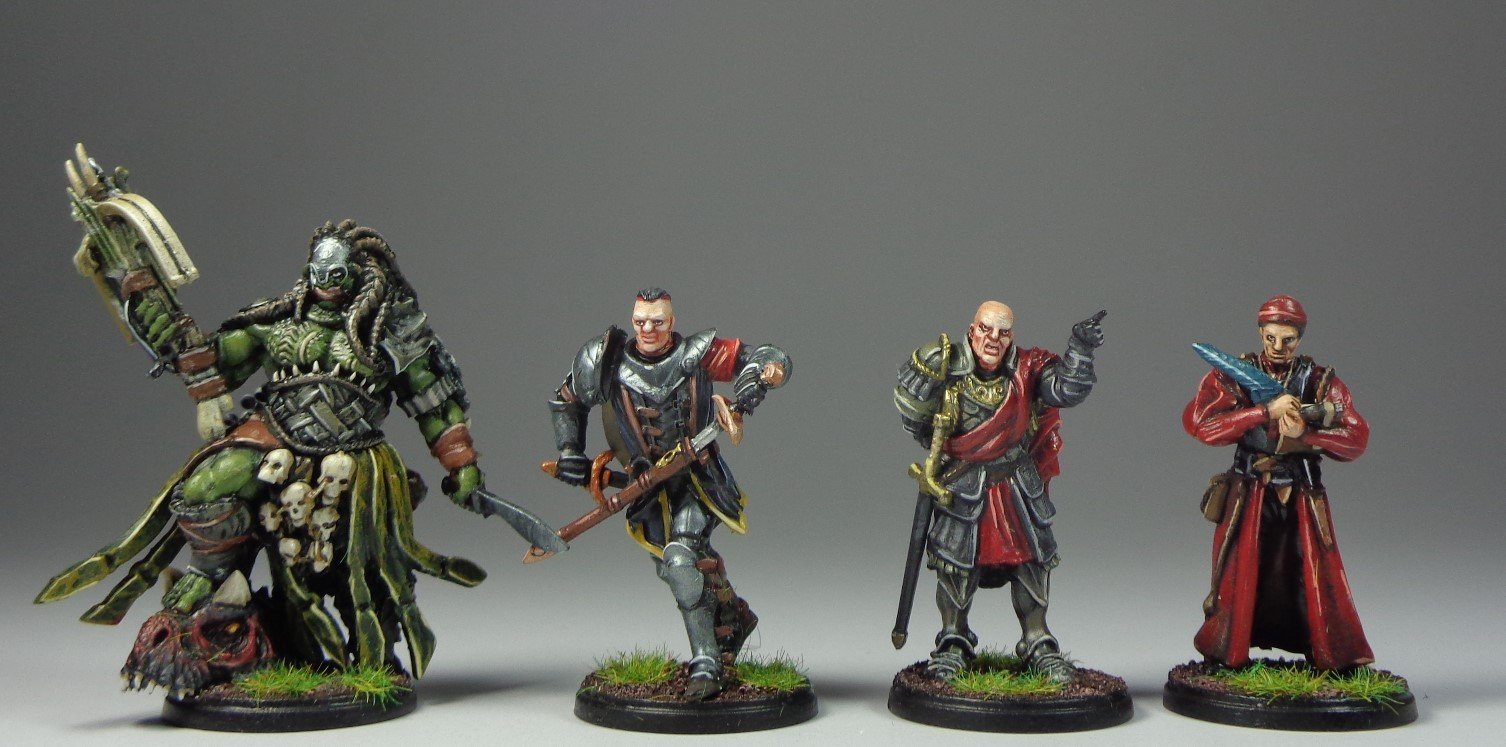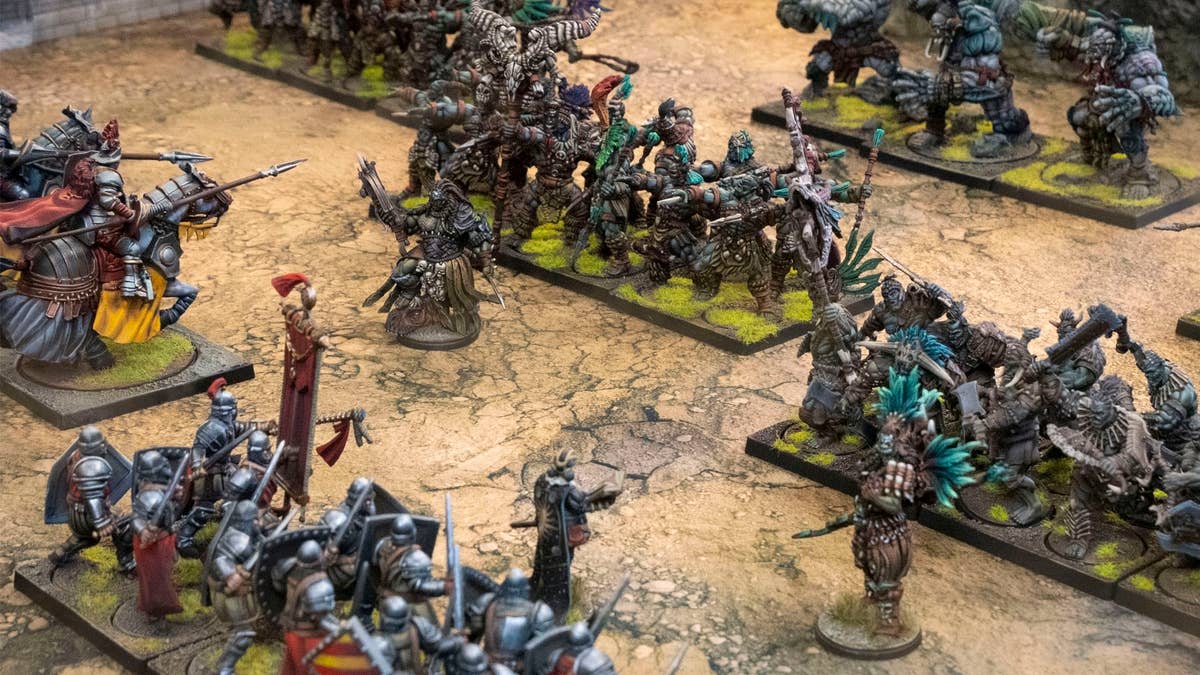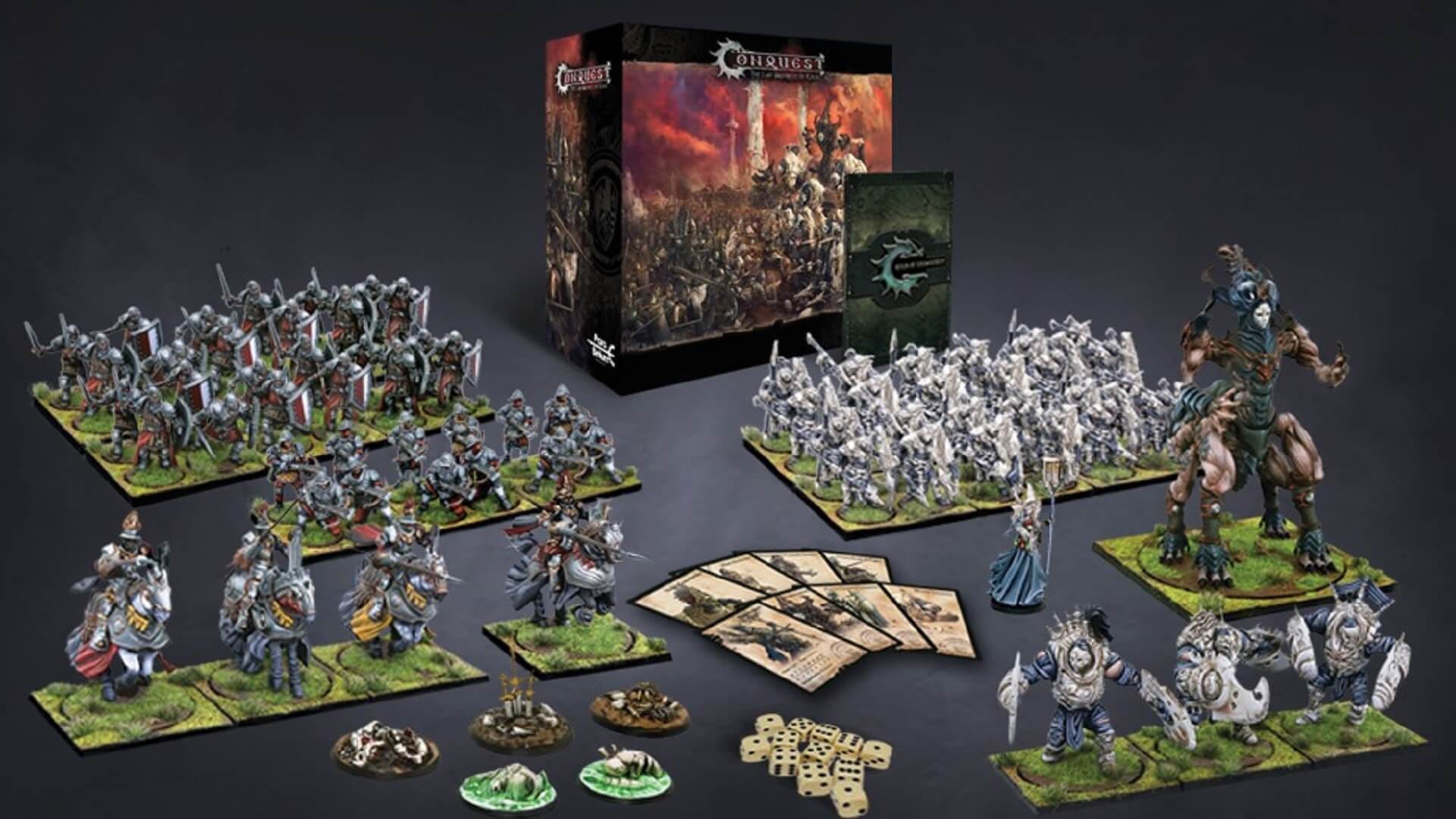The Drums of War
The town waits as your scouts, lithe and light, maneuver onto the field, leading and looking to see what’s waiting for you. Arrows, knives, blades are ready, as they should be, for these are Imperial Rangers, trained to be the Hundred Kingdoms’ first, and often last, fighters. Their watchful eyes look to the distance, where strange towers rise, housing mutants, monsters, and the day’s likely enemies. You have entered Conquest: The Last Argument of Kings.
The first sign comes not on the surface, but as a dark cloud on the horizon. Edges flickering, like black thorns on the wind, the Stryx are the first sign the rumors are true. The Spires are coming. With a throat suddenly dry with fear, the rangers raise horns to lips and blow the battle-cry. The booming drums that follow match the thundering in their hearts.
The Conquest has begun.
The Balance of Battle
Para Bellum’s Conquest: The Last Argument of Kings invites the fantasy epic, nay, promises it with a miniature rank-and-file wargame stuffed with lore, grit, and guts. Smashing monstrous battalions together on a battlefield is always an appealing proposition, but Conquest goes further, wrapping your forces in story and stringing the game together in a fluid back-and-forth, ensuring surprise and strategy are both summoned in equal measure.
This mass battle game sees warbands of dwarves, minotaurs, dinosaurs, and giants trekking towards objectives or obliterating enemies in head-to-head clashes. You’ll pick your faction, build up your force, and launch them into conflict, a scenario that might seem familiar save for Conquest’s unique spin, one that both makes these battles flow faster and introduces a fog of war layer unlike anything else. ![]()
Conquest puts tactics right at the start of the battle, with a clever reinforcement mechanism putting forces into the arena according to their speed. Those light rangers, quick to strike, can open the fight and get into position well before the Spires’ lumbering Abominations even make their way onto the board. Give up too much speed and you might find the objectives taken and fortified before your heavy monsters get a chance.
But tilt too far the other way, and your speedy scouts could be demolished by marauding serpents or frost giants. What forces you deploy and when make up half the delicious dilemmas Conquest poses in every encounter, a decision made even more compelling when you explore the command stack.
Every round in Conquest has both players laying down a card for every active warband into a deck. Through alternating activations, you’ll flip over the top card of that stack, activating the shown unit. Like a general planning their actions, you’ll either look like a genius as your Dweghom Thanes counter the cavalry that just moved into their range, or an oaf as your archers go too early and fire at nothing but air.
The command stack is more than just a dance: it brings a kinetic energy to Conquest, with every round flowing as each player, stripped of deciding who to activate and when, simply maximizes the opportunity they have. It feels like war because there’s little pause in the action. Your minotaurs are up: what will they do? Who will they charge?
Most matches of Conquest are struggles over objectives on broad boards. It’s not a skirmish game, with nimble figures leaping around terrain, but rather one embracing grand strategy, appreciating the well-timed flank or a crucial supporting maneuver. You’ll battle back and forth, scoring points and routing your opposition, until one of you finds honorable victory or cowardly defeat.
But the matches are only one part of the adventure that is Conquest.
Assembling Your Armies
Para Bellum didn’t set out to just make a game. They made a universe, with every faction making up more than a motley unit menagerie. Take the Hundred Kingdoms, a group that’d be easy to dismiss as the standard ‘human’ faction in any other setting. Militia, archers, cavalry, you’ve seen it before.
Except no, not quite like this.
The Hundred Kingdoms are a melting pot of failed empires and forced conflict, decline remade into defiance as they stand against encroaching enemies both  human and far, far from it. Is your warband led by former imperial soldiers, trying to recapture the glory of their former days, or perhaps by a savvy mage, transplanting her powers from the political realm to the physical one?
human and far, far from it. Is your warband led by former imperial soldiers, trying to recapture the glory of their former days, or perhaps by a savvy mage, transplanting her powers from the political realm to the physical one?
And who will they field? Mercenaries who care about little save coin and the opportunity to earn it? Or noble warriors, like the Order of the Crimson Tower, who only fight for just causes, without the looting and pillaging that make war such a profitable enterprise.
Choices like this add flavor to building your army, giving your force a story even before it sets foot on the battlefield. Conquest’s deep background gives you a chance to tell your own narrative, building on a dramatic foundation.
Should you prefer to build on that foundation with those dinosaurs and giants, of course, you’re more than able. The four other factions of Conquest cover a wild range, like the Spires and their hideous experiments, fielding a force of horrors as their maniacal princes dawdle in those decaying towers. Or the W’adrhŭn, a long ago experiment gone wrong and left to fester, only now arising with raging raptors and a lust for vengeance.
The Dweghom are my personal favorite, a version of dwarves forged through violence and wonder into a fascinating faction. With infernal machines, massive living artillery, and elder dragonslayers, their every unit lives and breathes a world I wouldn’t want to live in, but will always enjoy.
The Great Campaign
With all this emphasis on storytelling, letting Conquest play out solely with one-on-one matches would be a tad disappointing. Thankfully, forming your army is just the start of your legend. Conquest comes with a free campaign structure, letting your retinue grow from battle to battle (or, should your forces falter, suffer some scars). They’ll pick up special skills, names, and a history worthy of their exploits. Much like in Warhammer 40K’s Crusade mode, this growth can happen no matter where, and against whom, your army finds itself battling, making it easy to keep telling your story with every single game.
Adding to the flexibility is Conquest’s sister title, Conquest: First Blood. While the miniatures and factions crossover between the two games, First Blood breaks up the massive armies for smaller scale conflicts, letting individual officers shine in a whirling melee. Forming ad hoc formations to keep those archers safe from a rampaging frost giant might seem more remote on a grand battlefield with dozens of forces, but zoomed in to a skirmish’s size, that mighty creature and its club make for a cinematic clash.
massive armies for smaller scale conflicts, letting individual officers shine in a whirling melee. Forming ad hoc formations to keep those archers safe from a rampaging frost giant might seem more remote on a grand battlefield with dozens of forces, but zoomed in to a skirmish’s size, that mighty creature and its club make for a cinematic clash.
The Call to Arms
Given all this, how does one get started with Conquest?
The easiest way is to look around the room and decide who wants to dive into this adventure with you. Find at least one friend and, together, pick one of several two-player starter sets. Each one comes with different factions, scenarios, and a rules guide—the complete, living rules are all found for free online at Para Bellum’s website. Alternatively, single-army starter sets let you join in if your friends are already embroiled in war.
As it’s a miniatures game, Conquest does require some assembly and painting, though both give you the opportunity to customize your army. Want your minotaurs  to march into battle in an all yellow-and-pink getup? Go for it. Or perhaps you’d like your infernal automatons to spout blue flame instead of orange. What might seem intimidating at first glance is really just the first page of your Conquest legend.
to march into battle in an all yellow-and-pink getup? Go for it. Or perhaps you’d like your infernal automatons to spout blue flame instead of orange. What might seem intimidating at first glance is really just the first page of your Conquest legend.
Once your force has found its footing, take them to the battlefield and start your story with one of many possible scenarios. Lace several together for a campaign, or work with your local store to start a dedicated game night where factions can face off in grand conflict.
So if you’re looking for something new, something epic, something that matches the scale its story demands, take a look at Conquest: The Last Argument of Kings.
Written by Adam Knight
Spinning stories and playing games under the direction of his two cats, Adam delights in the roll of the dice and a well-told tale. Find more of his adventures at Black Key Books.

